Amarnath Temple Complete Guide: A spiritual journey in Kashmir
The Amarnath temple, nestled in the heart of the enchanting Kashmir valley, adds a touch of spirituality to our well-crafted Kashmir Trip Package. Along with the deep spiritual meaning that the Amarnath Mandir holds, it also adds to a touch of adventure in Kashmir as the route to reach this Amarnath cave requires you to climb a mountain pathway.
Every year thousands of devotees visit the holy Amarnath cave, to worship lord Shiva in the form of an ice lingam. The unique ice lingam is a major factor in attracting pilgrims from all over the country, making it one of the most visited religious places in Kashmir.
In this blog, we will gain in-depth knowledge about the Amarnath Yatra 2024, so that you can plan your visit to this holy Amarnath cave temple – one of the most popular places to visit in Kashmir.
The Legend of Amarnath Mandir
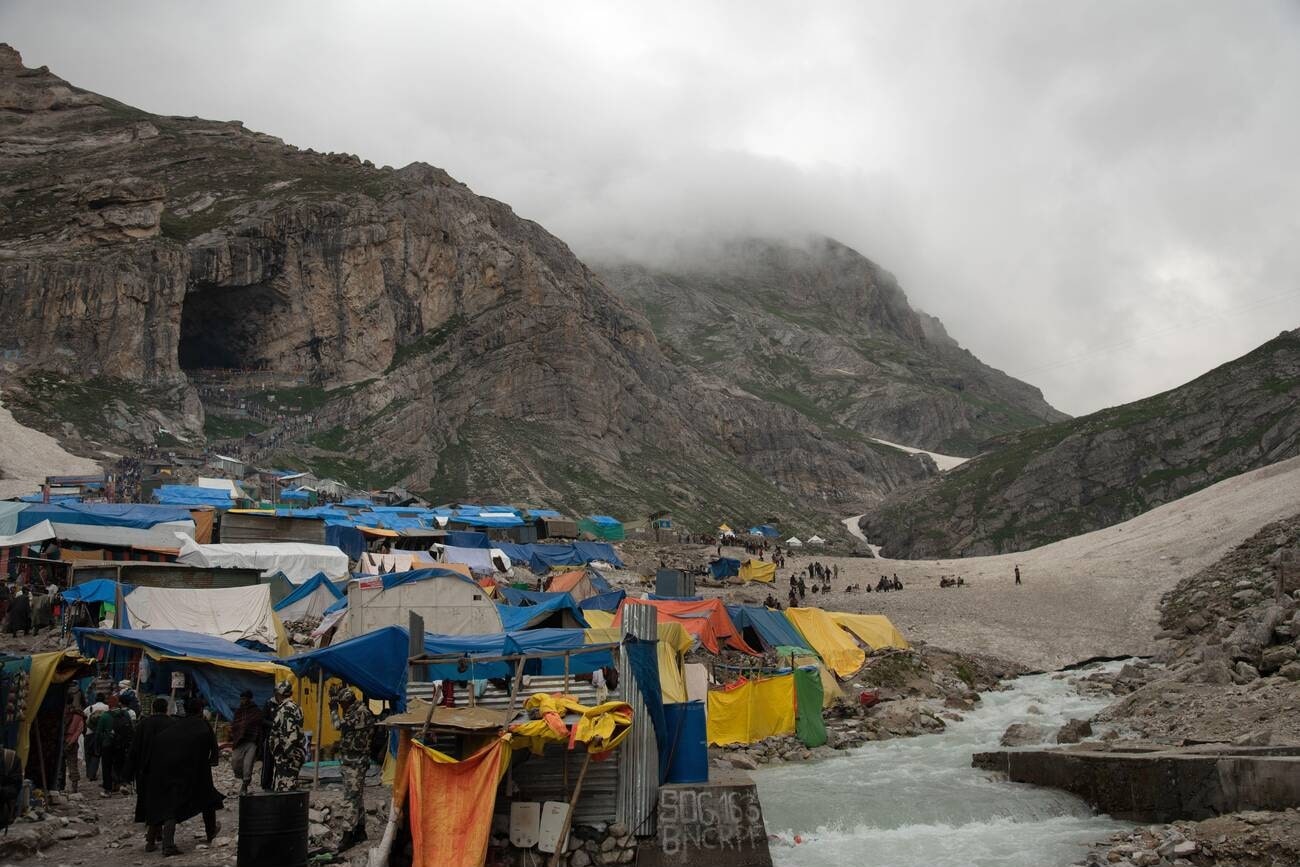
The story of the Amarnath Temple is very popular in the Hindu mythology. The word Amarnath comes from “Amar” which means immortal and “Nath” which means Lord; referring to Lord Shiva. According to the mythology, Goddess Parvati – wife of Lord Shiva had asked him about the secrets of eternal life. Lord Shiva refused at first but decided to share the secrets when goddess Parvati insisted again and again.
Lord Shiva did not want anyone else to know the secrets, so he decided to go to a more secluded spot, where only gods could reach. They left their original home – the Kailash and traveled through the valleys of Kashmir to find a perfect spot.
However, it is believed that while traveling to the Amarnath Cave, lord Shiva left his belongings on the way as he did not want anyone else to know the secrets of eternal life. He left his vehicle Nandi – the Bull in Pahalgam, the moon from the deadlocks at Chandanwari, the snake from his neck at the banks of Sheshnag Lake in Kashmir. They also left their son Lord Ganesha at the Mahaganesh parvat.
On the way to the Amarnath Cave, there is one place by the name of Panchtarini which is a dropping point for the pilgrims arriving with Amarnath helicopter booking. This is the place where the five elements of nature – earth, water, air, fire, and sky were left behind by Lord Shiva.
The divine couple finally reached the Amarnath gufa, where Lord Shiva started telling the secrets of eternal life to goddess Parvati. Despite all the efforts, this conversation was heard by a pair of doves nesting in the cave.
During the Amarnath yatra, pilgrims often try to spot these pairs of doves as seeing them is a sign of a good omen. It is said that these doves have existed in the Amarnth gufa since they heard the conversation of the divine couple and achieved immortality.
Facts About The Amarnath Temple
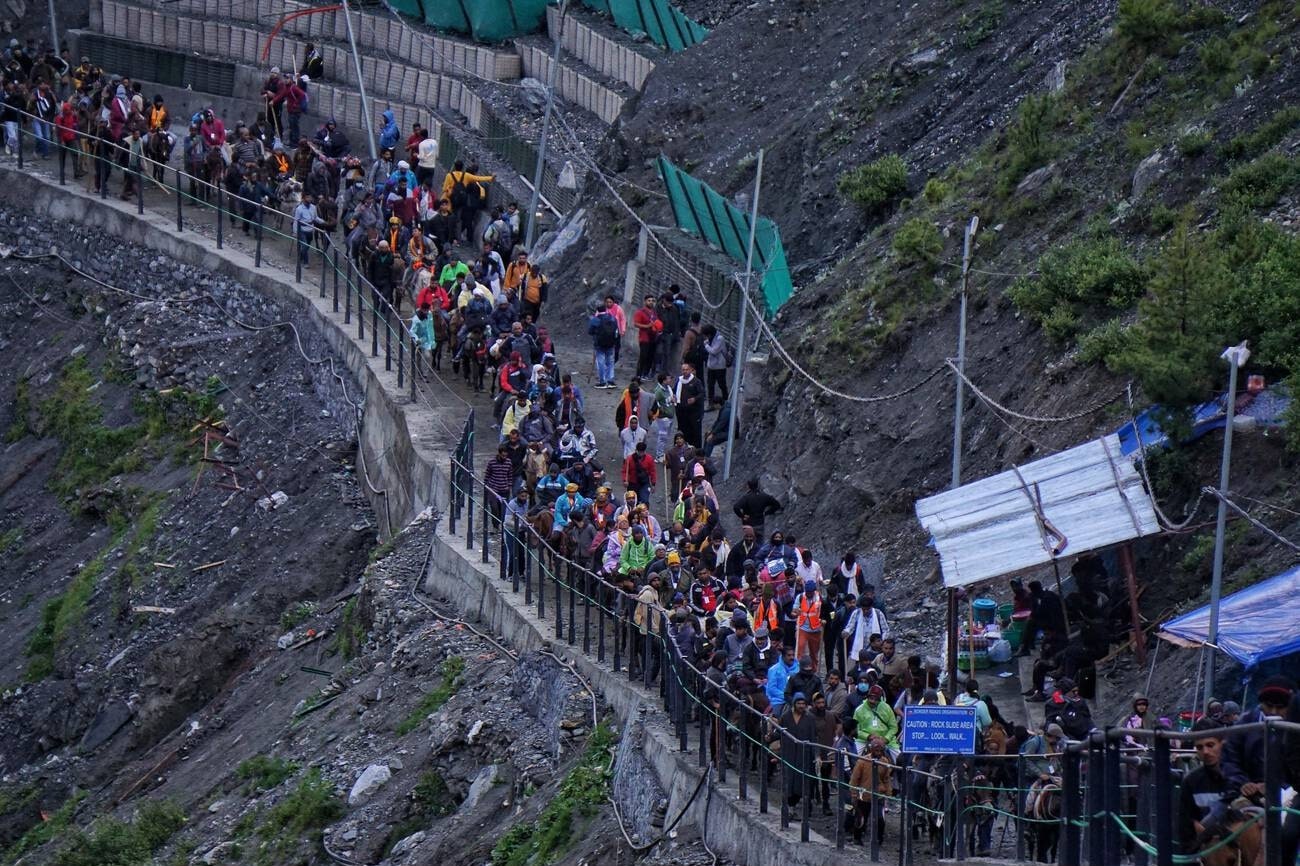
- Amarnath location – The Amarnath Temple is located in the Anantnag district of Jammu and Kashmir in the south Kashmir Himalayas. It is reachable via Pahalgam and Baltal.
- Altitude – The Amarnath Cave, where the Mandir resides, is 3,888 meters (12,756 feet) above sea level.
- Amarnath Yatra Duration – Amarnath Yatra usually takes place from late June to August during Shravan month as per the Hindu calendar. Typically, the trip lasts 45 days.
- Accessible Months – Only in July and August, coinciding with the Hindu month of Shravan, is the pilgrimage to Amarnath Gufa possible.
- Starting Points – Pahalgam & Baltal
Reasons To Visit Amarnath Temple
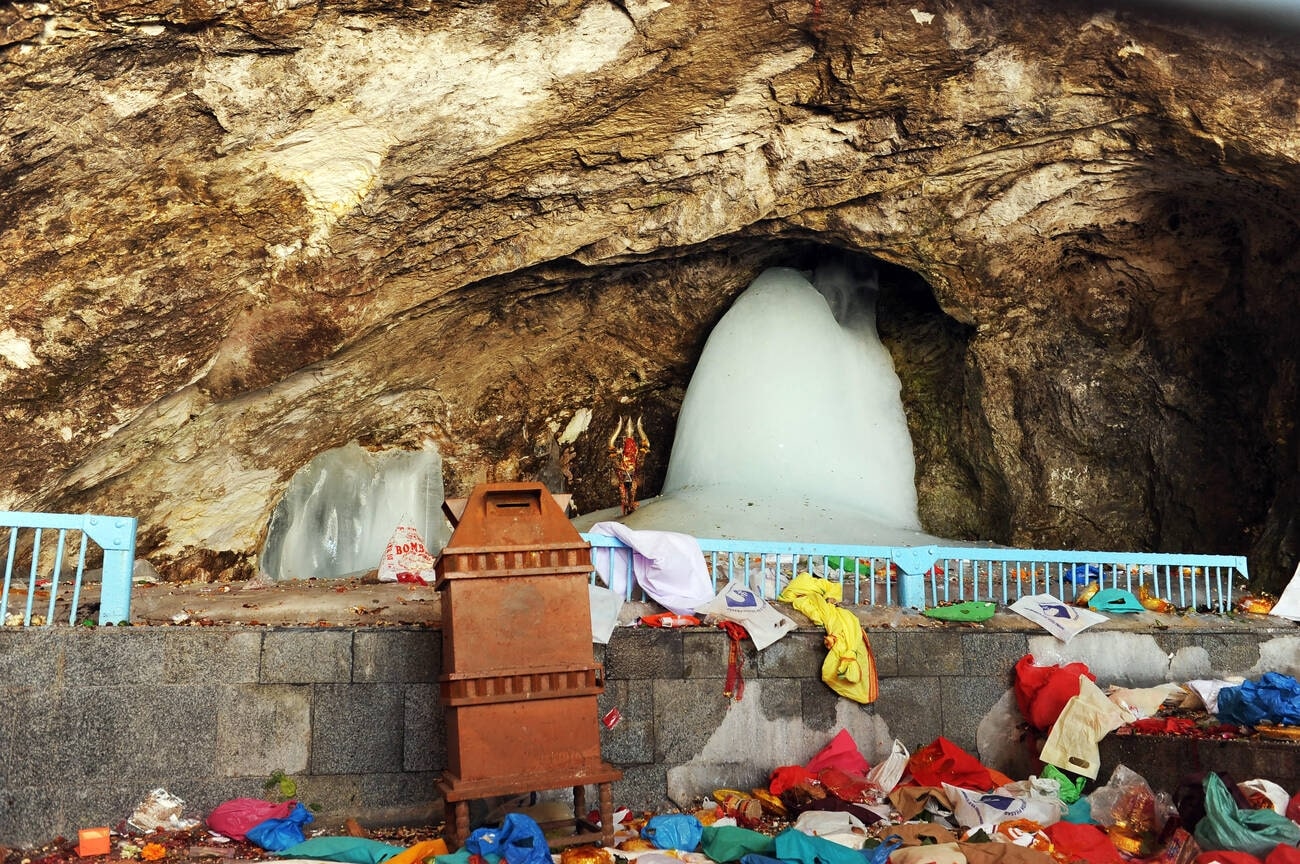
- Swayanbhu Lingam: The Shiv Lingam in the Amarnath temple is believed to be “self-manifested”. The lingam is formed naturally as a stalagmite due to the freezing of water droplets falling from the roof on the cave floor in the winter months of Kashmir. This resulted in the upward growth of an ice formation which is worshipped as a lingam. There are two smaller stalagmites, which are believed to represent the goddess Parvati and Lord Ganesh. Pilgrims flock to the Amarnath cave to witness this unique Shiv Lingam.
- Spiritual Magic: According to the belief, the ice lingam changes its size according to the phases of the moon. This is another unique phenomenon that attracts tourists to this holy Amarnath mandir.
- Langar Services: Various organizations set up langars (free community kitchens) along the route to Amarnath Gufa, providing food and drinks to the pilgrims. These langars are a testament to the community spirit and hospitality that marks the Yatra.
- Seasonal Allure of Amarnath Temple: The Amarnath Temple’s ice lingam, embodying Lord Shiva, forms in winter and melts by summer’s end. Reflecting life’s impermanence, this natural cycle attracts thousands in a brief, sacred pilgrimage, marking its unique spiritual significance.
- Ecological Sensitivity: The region around Amarnath Gufa is ecologically sensitive and prone to changes due to climate change and human activities. Efforts are made to ensure that the pilgrimage has a minimal environmental impact, including regulated pilgrim numbers and strict guidelines on waste management.
Suggested Read: Why Kashmir Is Called Heaven On Earth
Registration for Amarnath Yatra 2024
Offline Registration for Amarnath Yatra 2024
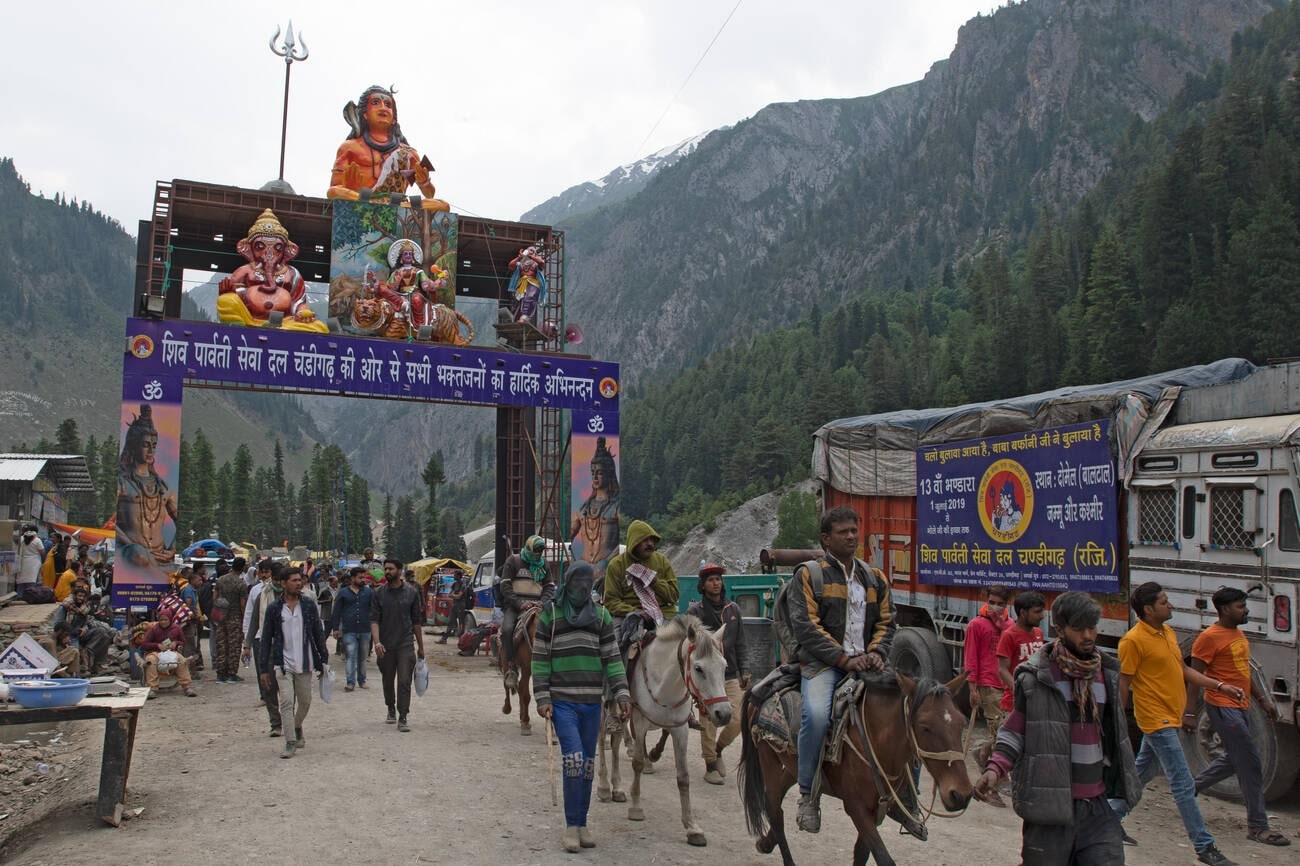
- Commencement: The Amarnath Yatra registrations, starting from April 17, 2024, are accessible through 446 designated branches of Punjab National Bank, Jammu and Kashmir Bank, and YES Bank.
- Pilgrim Quota: The way to the Amarnath Cave admits 7,500 visitors per route, for a total of 15,000 pilgrims per day. It covers walking and helicopter services to prevent crowding in the Amarnath area.
- Eligibility: Pilgrims aged between 13 and 75 years are eligible, excluding women over six weeks pregnant, ensuring everyone’s safety given the Amarnath temperature and conditions.
- Documentation: Applicants must submit a completed application form and a Compulsory Health Certificate (CHC) issued by an authorized medical institution or doctor. The list of approved providers is updated regularly on the SASB website.
- Submission Window: Registration at selected bank branches usually takes place between 3 and 6 p.m., subject to confirmation.
- Required Documents: At the registration center, pilgrims must present a completed application form, a current CHC(Compulsory Health Certificate), and four passport-sized photos.
- Permit Color Coding: The Yatra Permit’s color varies daily and by route, facilitating pilgrim management and route designation.
Suggested Read: Best Kashmiri Food Dishes That Are A Must Try In Your Next Visit
Online Registration for Amarnath Yatra 2024
Online registration for the Amarnath Yatra opens on April 17, 2024. The Shri Amarnathji Shrine Board’s official website is where people register for the Amarnath Yatra online in 2024. Online registration for the Amarnath Yatra is a simple process that requires the following items to be completed successfully:
- Scan your vital documents, including your mandatory health certificate and pictures.
- Complete the registration form and attach all the required documents.
- Use the obtained OTP to confirm the mobile number.
- A confirmation message will be delivered to your mobile device following the procedure.
- Online application fees must be paid.
- After completing the registration, download the Yatra Permit.
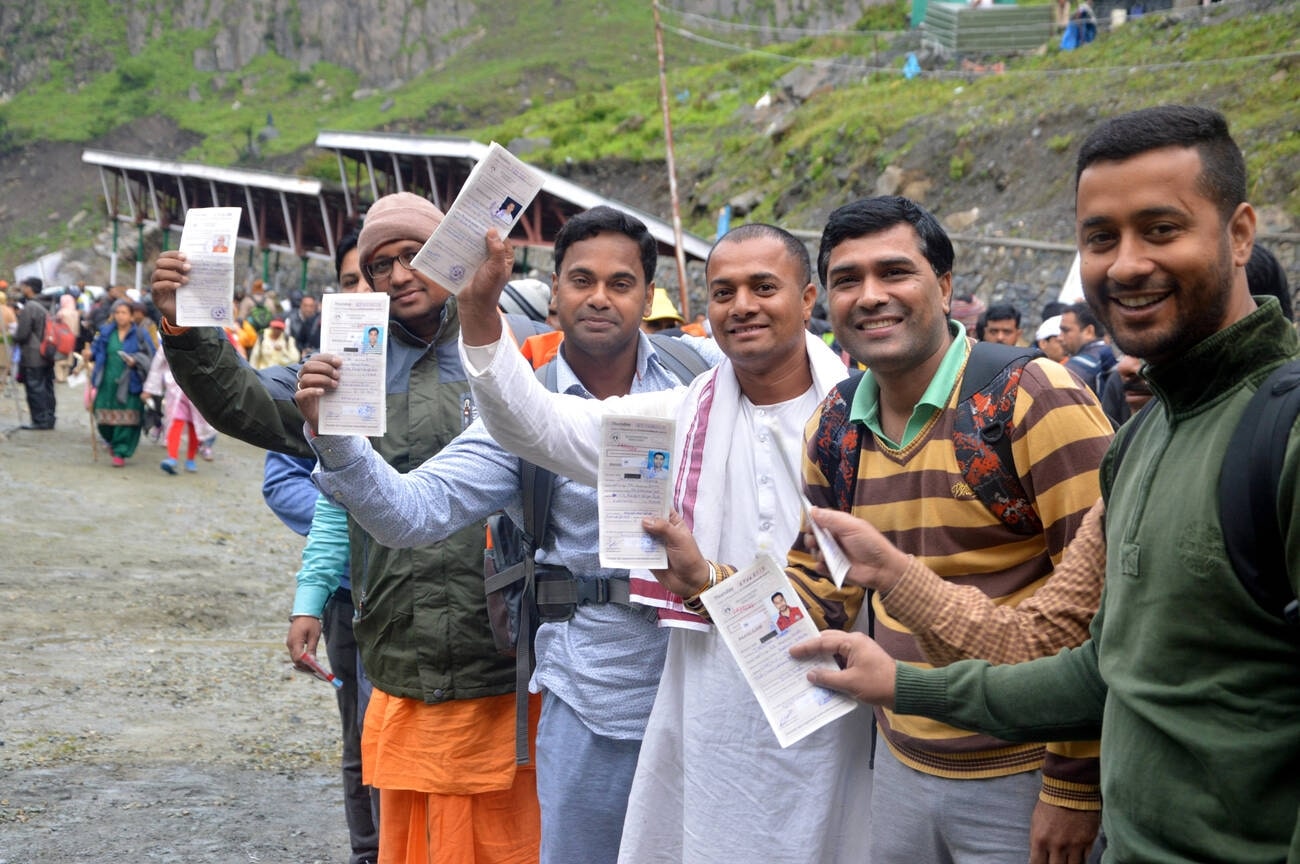
Postal charges for Amarnath Yatra Registration
A group with 1 – 5 members costs 50 Rs.
A group with 6 – 10 members costs 100 Rs.
A group with 11 – 15 members costs 150 Rs.
A group with 21 – 25 members costs 250 Rs.
A group with 26+ members costs 300Rs.
How to Reach Amarnath Mandir
Reaching Amarnath Mandir From Pahalgam
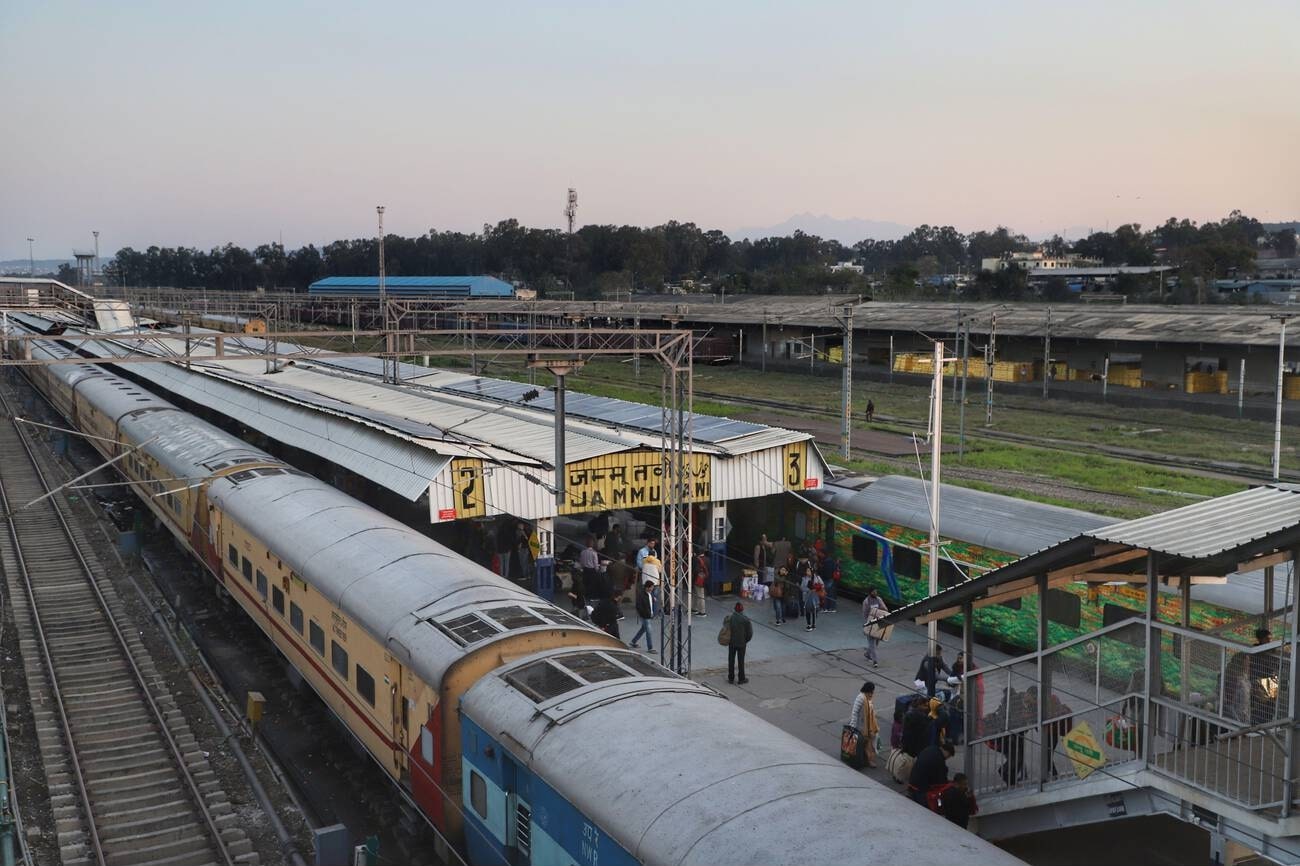
Pahalgam To Amarnath Mandir: Pahalgam – Chandanwadi – Pissu Top – Zoji Bal – Naga Koti – Sheshnag – Warbal – Mahagunas Top – Pabibal – Panchtarni – Sangam – Cave
One of the best places to visit in Pahalgam is the holy Amarnath Mandir. The Amarnath Yatra begins at the base camp of Chandanwari which can be reached via Pahalgam. They are separated by around 16 kilometers. After that, you must hike 13 km from Chandanwari to Sheshnag and another 4.6 km to Panchtarni. You can trek 2 km from here to Amarnath Cave, the home of Lord Shiva. Along this route, travelers can explore the serene beauty of Pahalgam and engage in various things to do in Pahalgam, making their spiritual journey even more enriching.
Often called the “Traditional Route,” the distance is longer but gradually rises, reducing the strain on pilgrims. Walking 45 to 48 kilometers from Pahalgam to the Amarnath Cave takes three to five days.
This path goes past many important spiritual places as well as beautiful scenery. Along the way, pilgrims can enjoy the stunning scenery of Betaab Valley, which is known for its peaceful beauty and lush meadows. This allows them to connect with nature and enjoy peace during their spiritual trip. You can also hire ponies in Kashmir from the base to make their journey easier.
Reaching Pahalgam For Amarnath Yatra
Nearest Airport: Srinagar International Airport (Sheikh ul-Alam International Airport)
Distance – 89.5km
Duration – 2 hr 10 min
Nearest Railway Station – Jammu Tawi Railway Station
Distance – 237.2km
Duration – 7 hr 20 min
Suggested Read: Dana Pani Restaurant, Pahalgam
Reaching Amarnath Mandir From Baltal
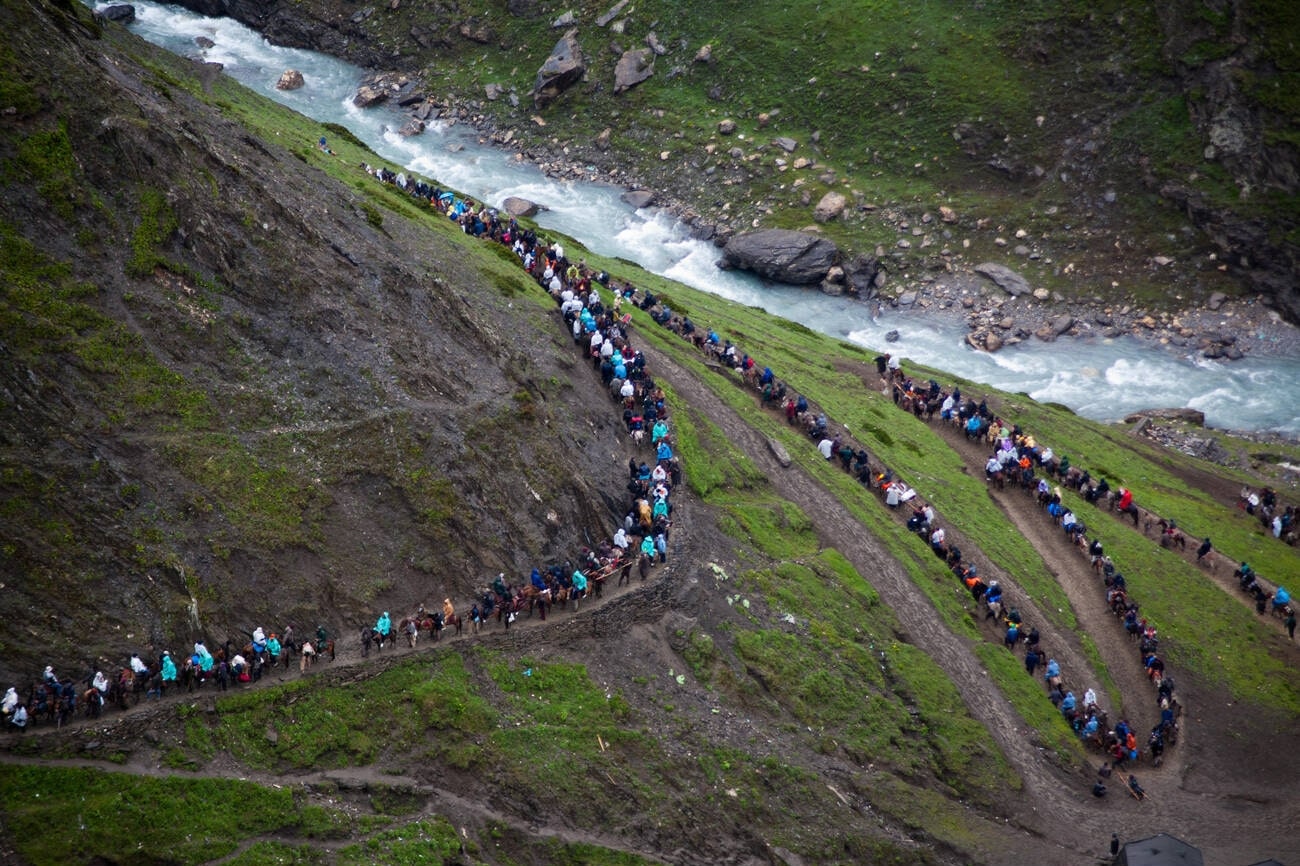
Baltal To Amarnath Mandir: Baltal – Domali – Barari – Sangam – Amarnath Cave
The Amarnath Baltal path begins in Baltal and ends in Domali which is around 2 kilometers away. The trip continues for another 6 km to Barari and then 4 km to Sangam. This means that Amarnath Cave, your ultimate target, is just 2 km away.
The shorter route has a more difficult path that goes for 14 to 16 kilometers and can be finished in one to two days. Individuals who want to get to the Amarnath Temple faster choose this route. At the same time, if you have senior devotees with you, this is the best route. You can also hire ponies to make their journey easier.
Reaching Baltal For Amarnath Yatra
Nearest Airport – Srinagar International Airport (Sheikh ul-Alam International Airport)
Distance – 114.3km
Duration – 3 hr 15 min
Nearest Railway Station: Jammu Tawi Railway Station
Distance – 344.3km
Duration – 8 hr 15 min
Reaching Amarnath Mandir By A Helicopter

Depending on the weather, helicopters in Baltal operate between 6:00 a.m. and 5:00 p.m. This helicopter will fly you from Baltal to Panchtarni. From the Panchtarni helipad, the Amarnath cave is 6 kilometers up the mountain.
Suggested Read: Top 10 Places To Visit In Kashmir In June For An Amazing Experience
Best Time To Visit The Amarnath Temple
Amarnath Temperature
- Amarnath Temperature During Day – The Amarnath temperature during the Yatra is between 15°C and 20°C (59°F to 68°F), which is a pretty mild environment for pilgrims as they walk along the path to the Amarnath Cave. Despite the daytime warmth, the powerful light at high altitudes needs adequate sun protection.
- Amarnath Temperature During Night – The Amarnath location experiences very chilly nights, with frequent lows below freezing, particularly in the neighborhoods that are closest to the Amarnath Cave. Pilgrims should prepare for lower temperatures at night. It is expected that temperatures at night will range from -5°C to 5°C (23°F to 41°F) for pilgrims.
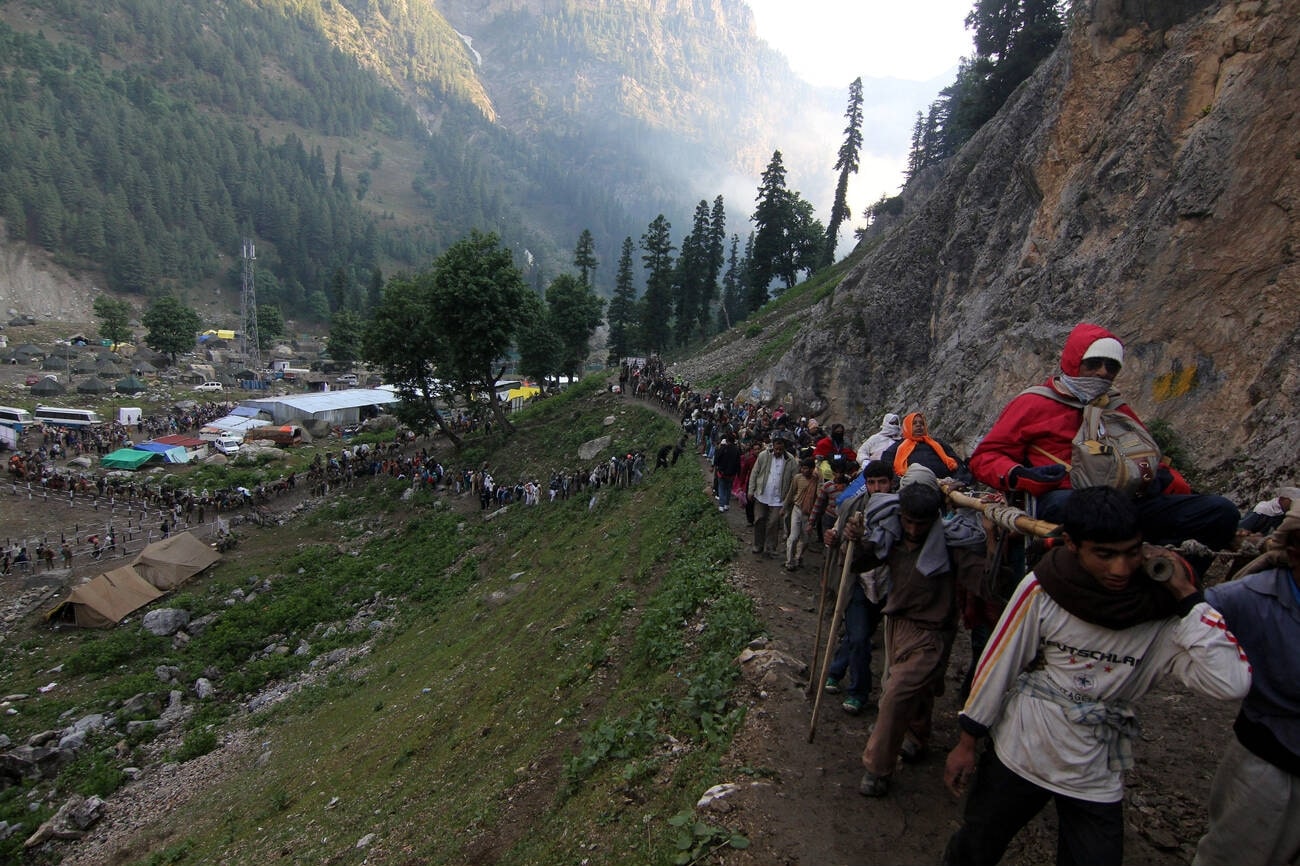
Amarnath Weather Conditions
- Early in the Season (late June to early July): The weather is cooler, and the probability of encountering snow on the trekking paths is higher, especially in areas closer to the Amarnath Cave.
- Mid-Season (July): This period generally offers the most stable weather conditions, with warmer days and clear skies, though sudden rainfalls can still occur.
- Late Season (August): The monsoon influence can increase, leading to higher chances of rainfall, making trekking paths slippery and increasing the risk of landslides in the region.
Travel Tips For Kashmir’s Amarnath Yatra
Important Do’s and Don’ts During Amarnath Yatra
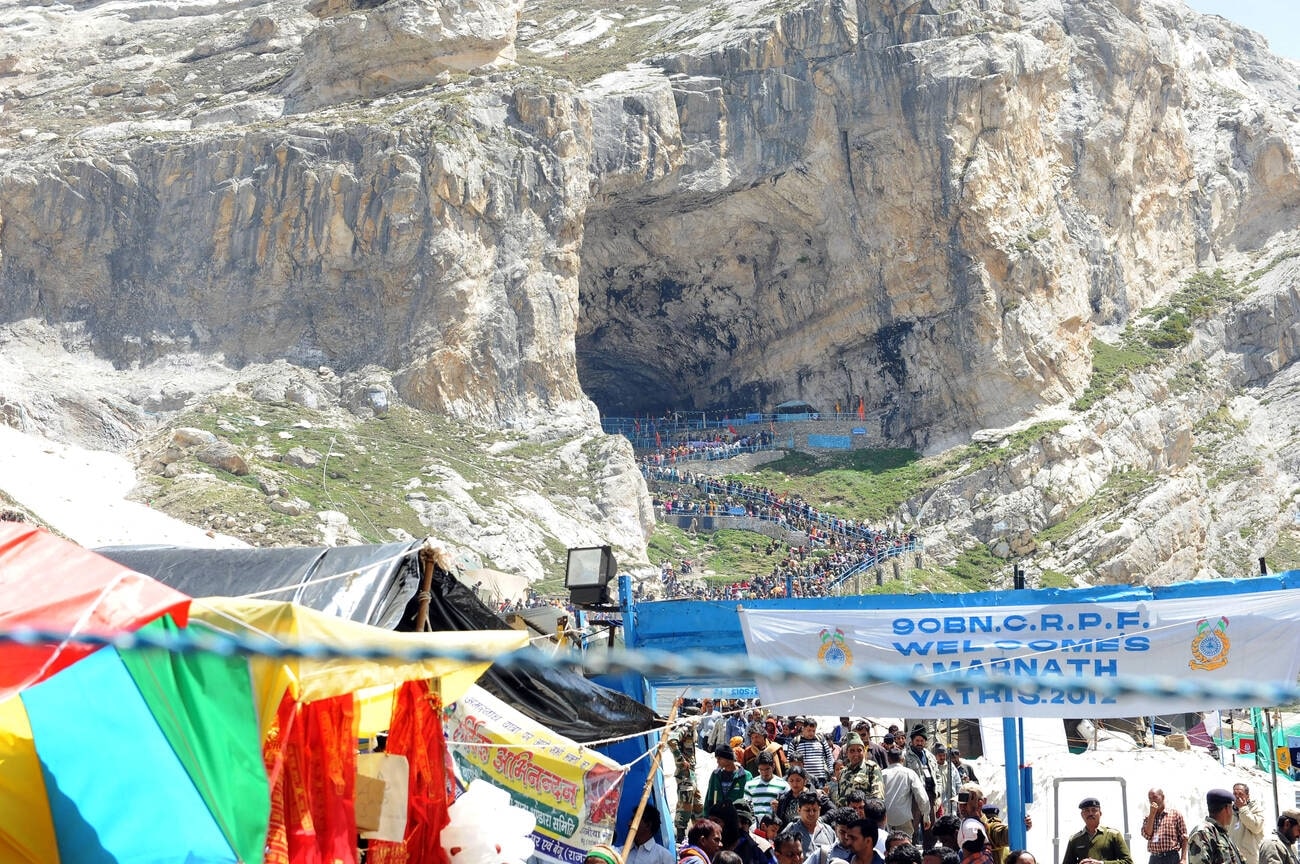
Do’s
- Proper identification should be carried out.
- Get used to the high altitude and pack the necessary things.
- Drink plenty of water, eat healthily, and observe local customs.
- Utilize environmentally friendly materials and stay on the designated route.
- Keep Up Your Physical Health
Don’t’s
- Don’t overwork yourself.
- Stay away from Pony and Palanquin Services That Aren’t Registered
- Avoid Visiting Restricted Areas
- Never Ignore Safety Warnings
- Avoid Going Alone at Night, Stay away from Smoking and Alcohol
- Pay Attention to Health Concerns
Amarnath Yatra Timings
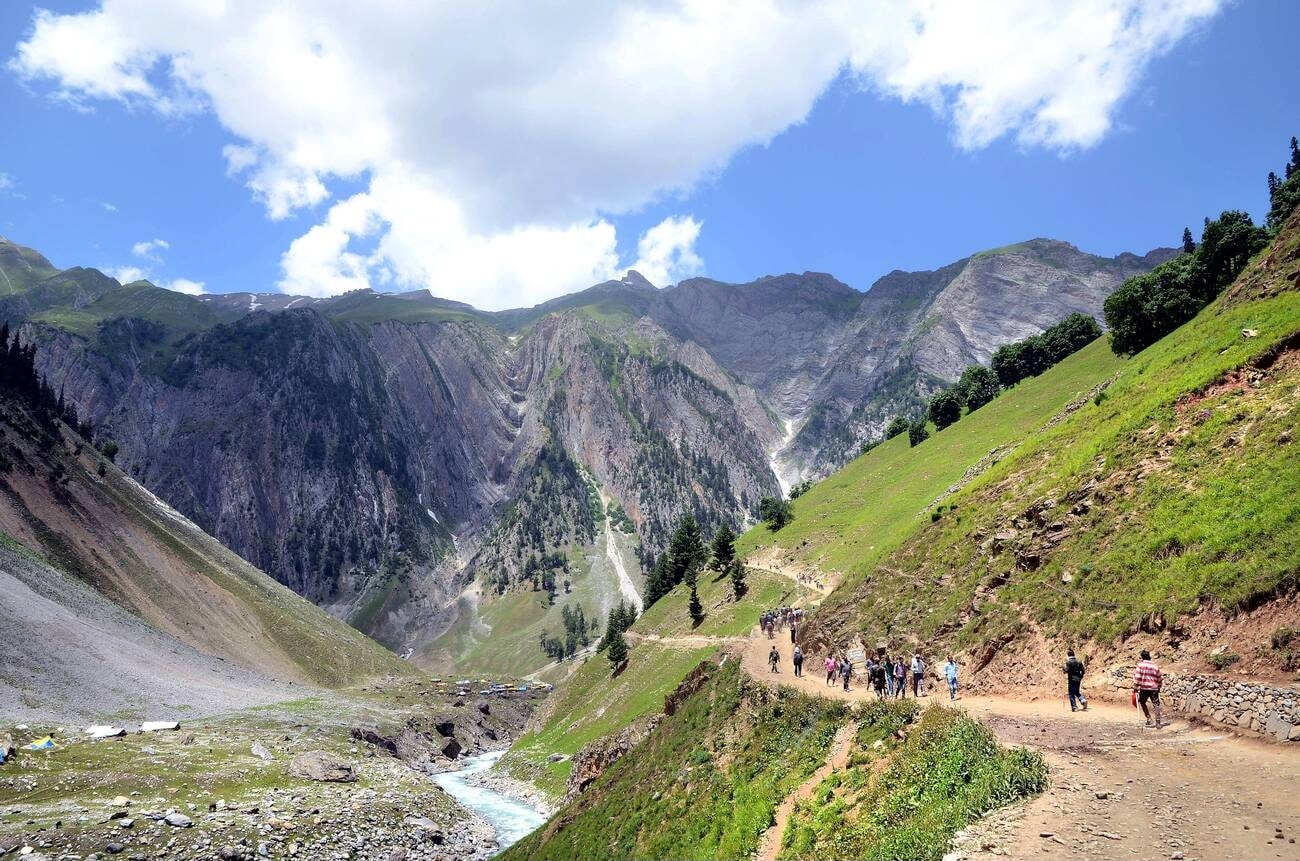
- Departure from the Domel Access Control Gate at Baltal begins at 5:00 A.M. and continues until 11:00 A.M.
- Pilgrims departing from Nunwan in Pahalgam can start their journey from 5:30 A.M. to 10:00 A.M.
- The Chandanwari Access Control Gate allows departures from 6:00 A.M. to 11:00 A.M.
- From the Sheshnag camp, pilgrims can depart between 6:00 A.M. and 2:00 P.M.
- The Panjtarni camp has a departure window from 5:00 A.M. to 3:00 P.M.
- Darshan at the Holy Cave is scheduled from 6:00 A.M. to 4:00 P.M.
How to Dress According to the Amarnath Weather
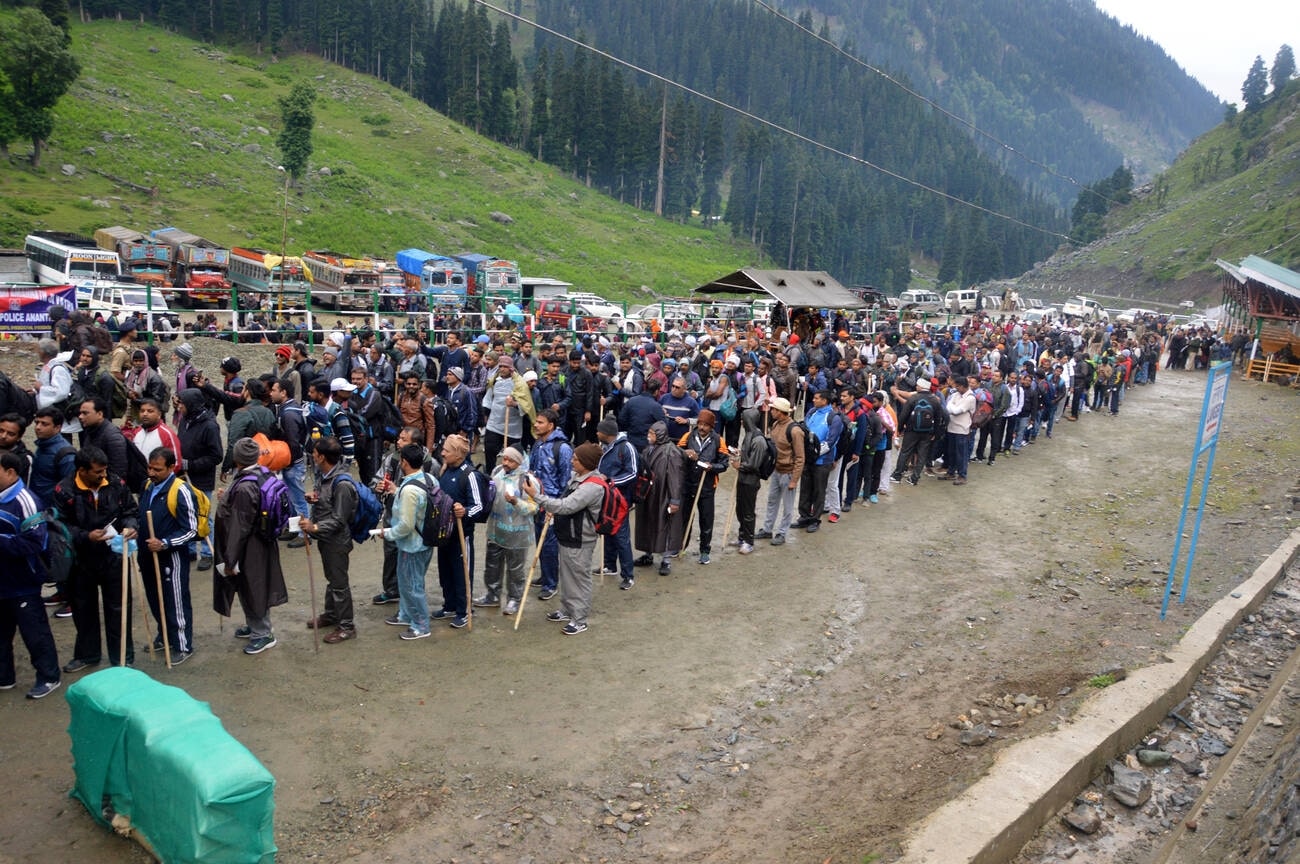
Here is some quick information about what to wear while traveling to Kashmir’s popular religious site – the Amarntha cave.
Cold Temperatures: Thermal wear, Insulated jackets, Woolen caps & gloves
Rain Conditions: Waterproof jackets, Waterproof pants, Rain poncho
Sunny Conditions: Sunglass, High spf sunscreen, A wide-brimmed hat
Additional Information For Amarnath Yatra
- Confirming your Amarnath helicopter booking service in advance is advisable due to high demand during the pilgrimage season, typically around July-August.
- While going to the Amarnath helicopter booking service, it is mandatory to submit.
CHC(Compulsory Health Certificate). - Devotees who wish to make any offerings to the Shrine can Donate Online.
- Devotees looking for Prasad and Virtual Pooja Services can book online.
- The overall organization of the Amarnath Yatra is taken charge by the Shri Amarnath Yatra Trust, which provides services like telecommunication, power supply, firewood, etc…
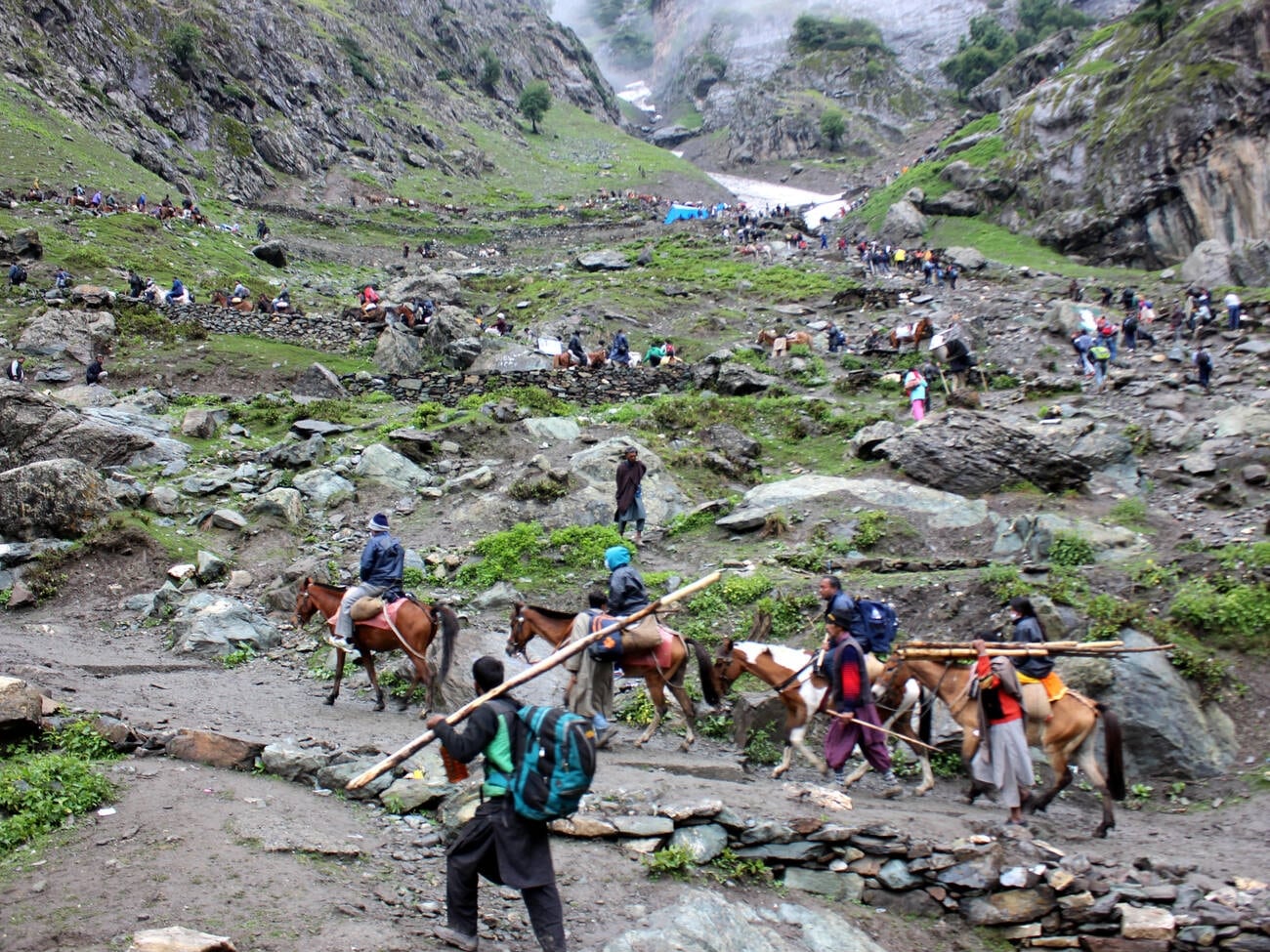
Conclusion
As you travel through Kashmir’s stunning scenery to the Amarnath Yatra, you’ll experience both life’s physical and spiritual aspects. Looking for Lord Shiva’s blessings at the Amarnath Temple, with its amazing ice lingam and the community spirit of the Langar, is a deep experience of faith, strength, and unity.
Each step towards the Amarnath Cave brings you closer to self-discovery and spiritual enlightenment, making for an amazing journey across the Himalayas. In essence, the Amarnath Yatra includes the endless search for divine connection, providing every pilgrim with a wealth of spiritual and emotional riches.
Frequently Asked Questions
Why is Amarnath temple famous?
Amarnath Temple is famous for its natural ice Shivalingam, which represents Lord Shiva. It’s in the south Kashmir Himalayas and draws many pilgrims every year.
Is Amarnath a jyotirlinga?
No, the Amarnath temple is not listed amongst the 12 jyotirlingas but remains one of the most-visited temples dedicated to Lord Shiva. It is one of the very few temples of Lord Shiva where the lingam is “self-manifested”. The naturally formed ice lingam is a major attraction here that draws several devotees to this holy shrine.
What is the mystery behind Amarnath?
The mystery of Amarnath lies in the sacred cave where a natural ice Shivalingam forms annually, symbolizing Lord Shiva. According to legend, in this cave, Lord Shiva revealed the secret of immortality to Goddess Parvati. This mystical event and the challenging journey to Amarnath Mandir make it a deeply revered pilgrimage, blending spiritual significance with the awe of nature.
In which state is Amarnath in India?
Amarnath is located in the union territory of Jammu and Kashmir, India.





